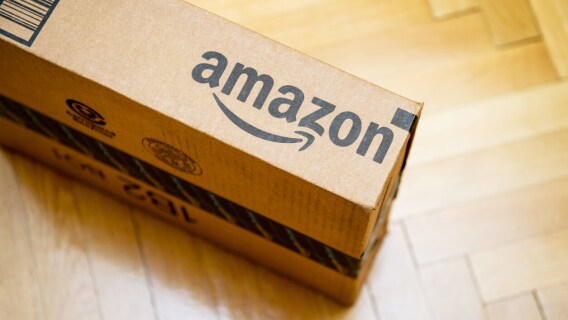Amazon.com stock has been perhaps Wall Street’s top performer for the last decade. Here’s why you shouldn’t expect anything close to that in the next decade.
Without a doubt, Amazon.com (AMZN) is among the most popular and widely held stocks.
With a market cap of $1.7 trillion, it is the third-largest holding among the $4.6 trillion of investments indexed to the S&P 500 (behind Apple (AAPL) and Microsoft (MSFT)). Amazon.com stock is also a top holding in a vast pool of other indexed and actively managed funds including the $131 billion Fidelity Contrafund, where it is the top holding at about 10% of assets, and the $144 billion Invesco QQQ ETF, where AMZN is the #2 holding at almost 11% of assets. It is also likely held by most pension funds and 401(k) accounts as well as in many individuals’ separate accounts.
In a self-reinforcing cycle, this popularity is helping drive the shares higher. Year-to-date the shares have gained 82%, and over the past decade the stock has appreciated at a compound annual rate of 35%, for a total return of 19x. As amazing as this return has been, the five-year 43% compound annual rate is even more impressive.
Not surprisingly, Wall Street is enthralled with Amazon.com stock. Of the 48 analysts that have ratings on Amazon, 46 rate it as Buy/Outperform, according to Capital IQ. Only two analysts assign a lower rating (Hold), with no Sell ratings.




What are the buyers of the 5 million AMZN shares that are traded every day assuming about their future returns? Many buyers have short-term or quant-driven motivations and therefore care little about time horizons longer than a few weeks. If these were the only buyers, then AMZN shares would be precariously balanced on daily news flow and momentum.
Assuming that there are long-term investors buying the stock, what are they expecting for their future returns? Perhaps they see the impressively strong fundamentals and assume that something like the 30%-40% rates of return of the past will continue. Let’s look at the math behind these assumptions.
Should You Buy Amazon.com Stock Now?
Since the company is valued not on current results, but on future results, we looked out seven years, to 2027 prospective results.
Let’s assume that Amazon can increase its revenues at a 15% rate each year, roughly in line with analysts’ estimates. In 2027, it would generate about $1 trillion in revenues. Let’s also assume that it can double its net profit margin to 10% of sales from the current 5%, so it would earn about $100 billion in profits in 2027, or about $200/share. If the market puts a 30x P/E multiple on the stock, the shares would trade at about $6,000 in seven years. This 80% increase from today’s $3,339 price may seem appealing, but produces a pedestrian 9% annual compound return.
Being more optimistic, if the shares could earn a generous 50x P/E multiple, the resulting $10,000 share price would yield a 17% annual compound return. While falling well short of the historical rate, this prospective return has understandably clear appeal.
Yet, how likely is Amazon to achieve these assumptions to reach even the $6,000 price? At $1 trillion in sales, Amazon would be larger than the $900 billion in estimated 2027 sales of Walmart and Microsoft combined. And, to continue to grow at a 15% rate and earn the premium valuation, Amazon would then need to add an incremental $150 billion in sales in 2028, and more each year thereafter. That would be the equivalent of two Target Corporations, or nearly one Google, each year. Amazon probably would have to expand successfully into a spread of new markets to even attain the $1 trillion revenue mark.
Can Amazon double its profit margins? Wider margins depend on pricing power and cost controls – difficult when its faces a vast roster of well-funded and aggressive competitors in its core retail and cloud businesses. And, Amazon is already widely recognized as stingy on expenses.
This outlook also assumes that the company won’t face any meaningful regulatory barriers or higher taxes, and that interest rates don’t increase (which could reduce the appeal of growth stocks). Meeting all of these requirements to reach even a $6,000 share price in 2027 may be a real challenge in a competitive and changing world. Any meaningful shortfall could result in a more dismal return.
With a rosy future already built into Amazon.com stock, it’s a tall order to justify new investments into the shares. And, for investors who are already loaded up on AMZN, either directly or indirectly through various investment products, it probably wouldn’t hurt to lighten up a bit.





